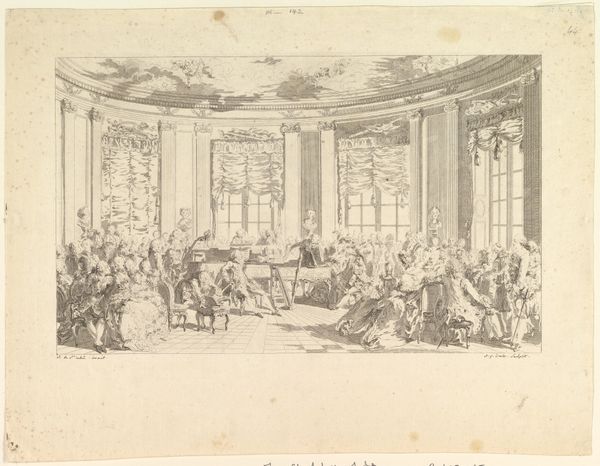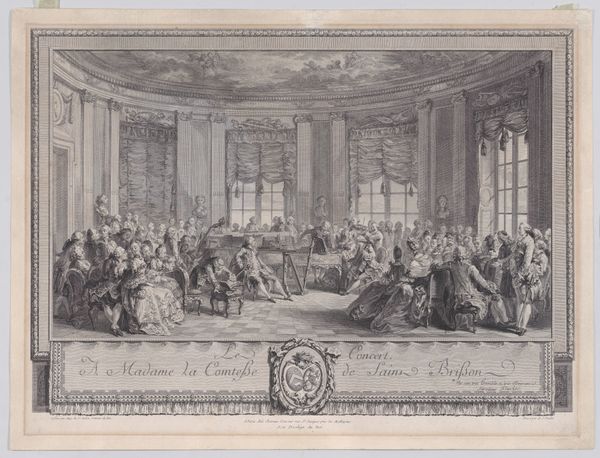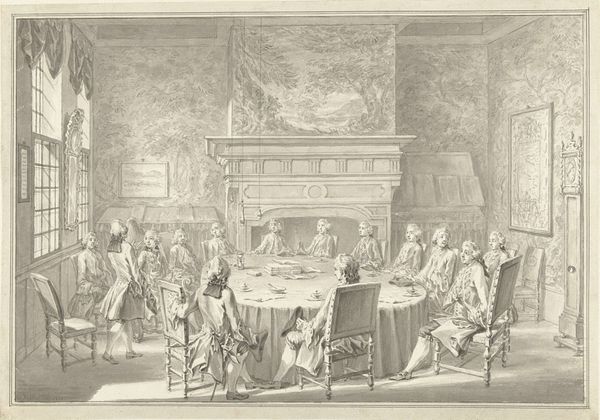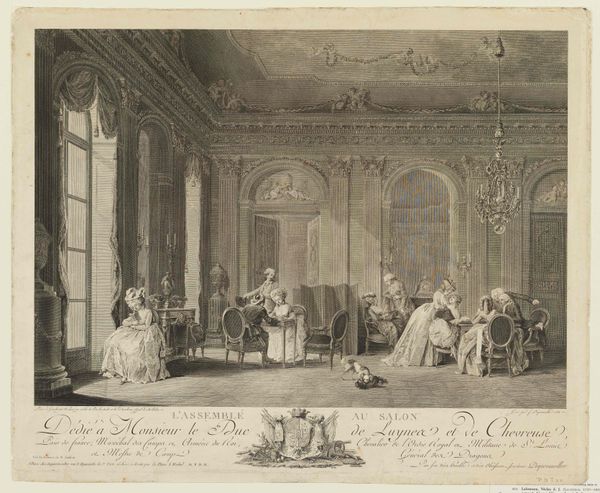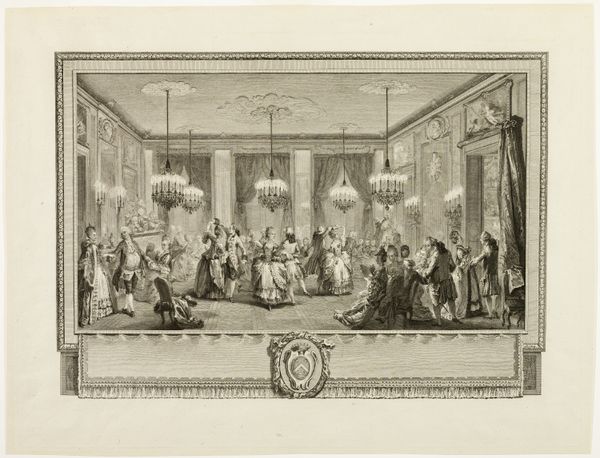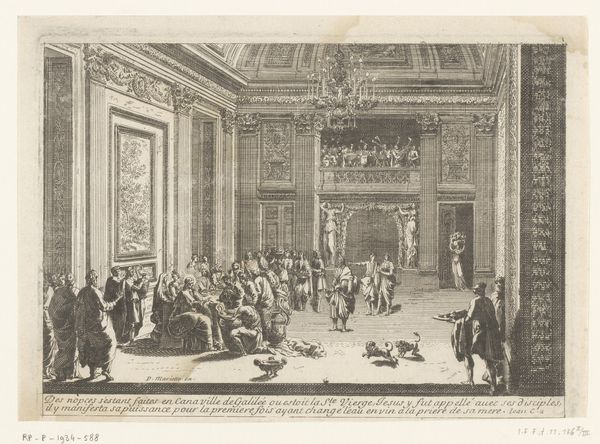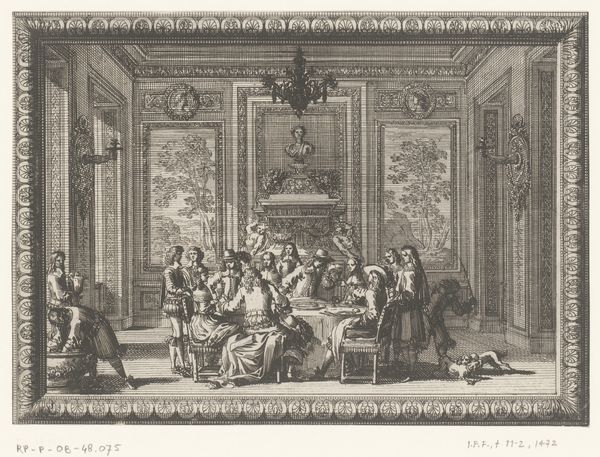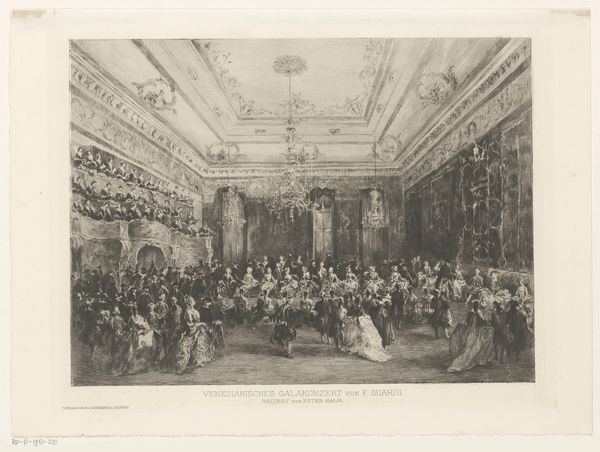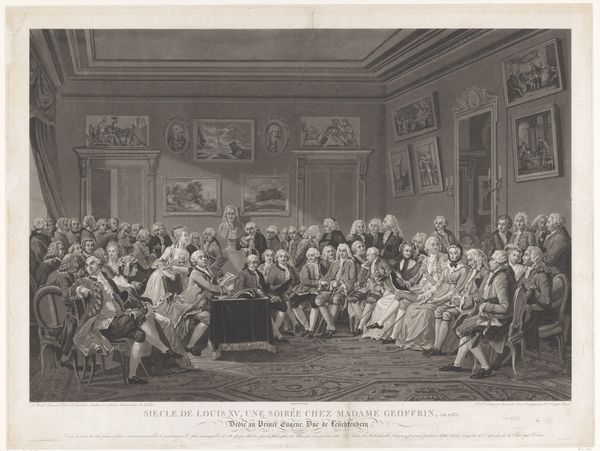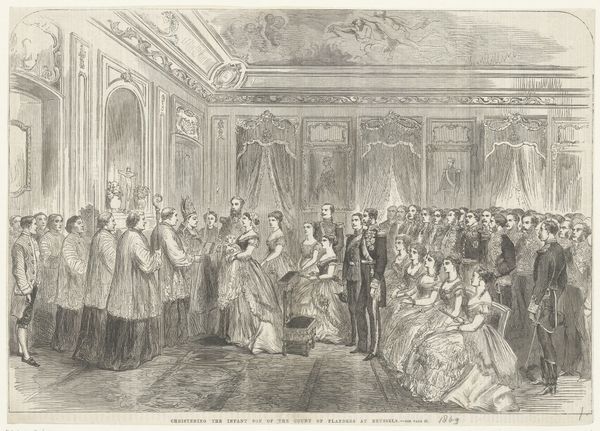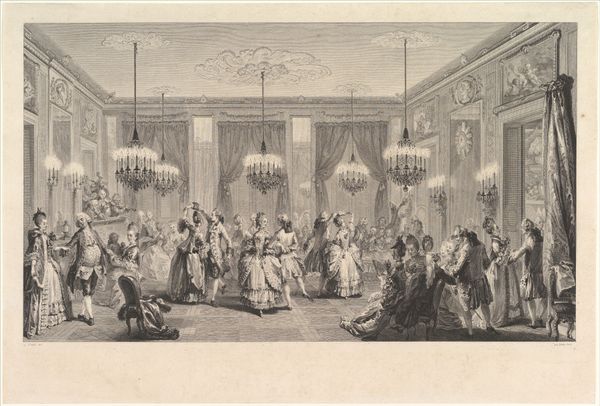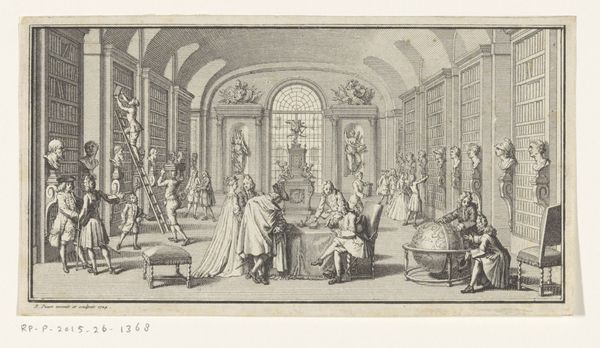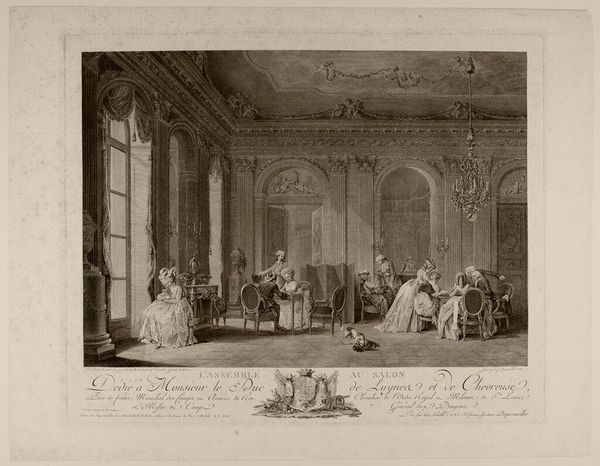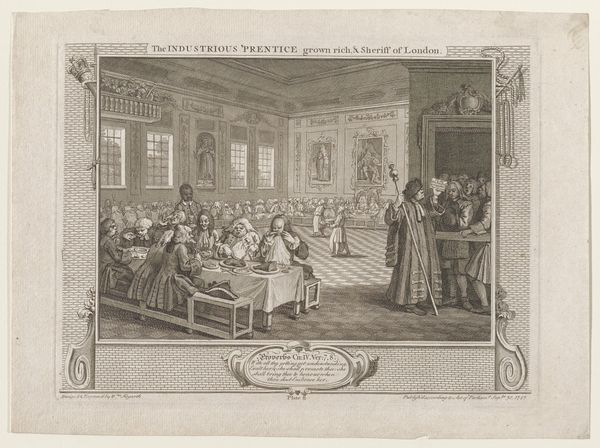
drawing, print
#
drawing
#
light pencil work
#
mechanical pen drawing
# print
#
pen sketch
#
book
#
pencil sketch
#
old engraving style
#
personal sketchbook
#
sketchwork
#
pen-ink sketch
#
men
#
pen work
#
pencil work
#
musical-instrument
Dimensions: sheet: 11 1/8 x 16 7/16 in. (28.3 x 41.8 cm)
Copyright: Public Domain
Curator: "The Concert," created by Antoine Jean Duclos in 1774, a print now held at the Metropolitan Museum of Art. What strikes you most about it at first glance? Editor: Well, immediately I’m drawn to the hushed intensity. It's monochrome, of course, but the density of the figures crammed into that circular room—it evokes a sense of exclusive access, an almost voyeuristic peek into a privileged world. Curator: Absolutely. The staging itself is incredibly important here. Note how Duclos captures the physical arrangement—who’s given center stage versus who’s relegated to the periphery. It reflects not only status but also the performance of gender and class within this society. The seated figures listening, the almost theatrical setup with the musicians facing them... who is seen and who is heard, quite literally, shapes power. Editor: That’s a critical point. And in looking closer, it's impossible not to notice who *isn't* there. Considering France in 1774, the glaring omission of marginalized voices speaks volumes about who this concert was really *for*. Where are the depictions of laborers, peasants or anyone not deemed respectable? Curator: Exactly! By focusing solely on the elite, the artwork normalizes and reinforces societal hierarchies. Even the instruments become markers of exclusivity—music as a commodity, available only to those with the resources and status to partake. Also, let's look at how the light is falling—illuminating certain figures, leaving others in shadow. Editor: Which mirrors who is being ‘seen’ in society, validated. The architecture too seems important; those classical details evoke the Roman Empire. Curator: It gestures towards a desired lineage of refinement. These performances were central to shaping the public role of the arts and constructing ideas about French identity and authority at this time. This was a political performance, almost as much as it was a musical one! Editor: I agree entirely. This print is a compelling document of 18th-century social and political dynamics. Duclos doesn't just depict a concert; he illustrates a microcosm of a stratified society in a very controlled setting. Curator: Seeing "The Concert" through this lens of exclusion definitely alters the appreciation of this work, allowing to question established power. Editor: Absolutely. It reminds us that seemingly innocuous depictions of everyday life are frequently powerful expressions of entrenched interests.
Comments
No comments
Be the first to comment and join the conversation on the ultimate creative platform.
